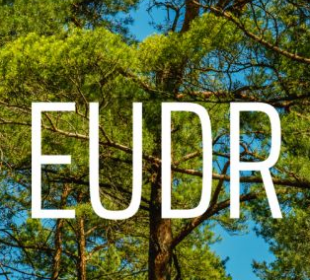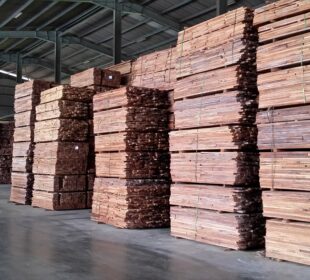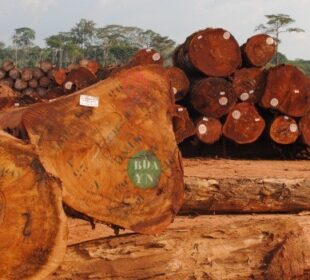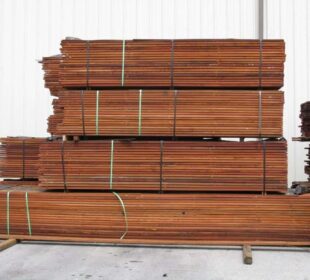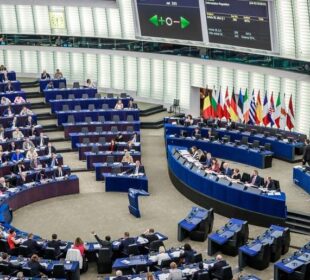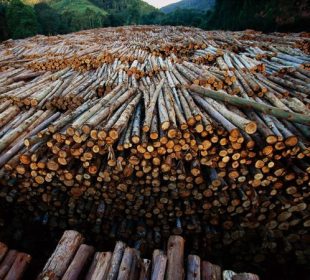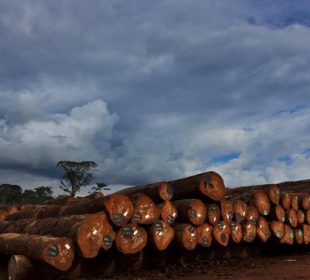To rebuild share in the European market, the tropical wood sector must exploit emerging opportunities from the synergies between the FLEGT VPA process and private sector forest certification initiatives, and to focus relentlessly on communicating simple messages to target audiences of architects, designers and civil engineers on the carbon mitigation and forest conservation benefits of using sustainable tropical timber.
These were key messages of the 2019 European Sustainable Tropical Timber Coalition (STTC) Conference, held in Berlin, Germany, on 20th November.
The Conference was convened to consider the related themes of tropical timber promotion and the relationship between certified tropical forest management and regional and national initiatives in the tropics, including the EU FLEGT VPA programme and Verified Sourcing Areas.
The event was well attended, with over 100 participants including tropical hardwood traders, timber trade association representatives, NGOs, procurement officials, and technical service providers to the European tropical wood industry. It followed the successful format of previous years mixing short presentations with participatory group discussions led by Peter Woodward, an enthusiastic and articulate facilitator, to encourage input from all parties and generate new ideas.
Nienke Sleurink of Netherlands-based IDH, the Sustainable Trade Initiative, the STTC founder and main donor, introduced the event, noting that IDH has just published a new report “Unlocking sustainable tropical timber market growth through data” with the conclusions of a study to assess the share of FSC and PEFC certified tropical timber in EU supply chains.
The report concludes that between 25% and 32% of the total tonnage of tropical primary wood imports (logs, sawnwood, veneer and plywood) into the 7 main EU importing countries, which together account for over 90% of all EU tropical imports, was either FSC or PEFC certified in 2018.
The proportion varied widely between countries, being highest in the Netherlands (65% to 70%), followed by the UK (40% to 45%), Germany (30% to 35%), Belgium (25% to 30%), France (10% to 15%), Italy (5% to 10%) and Spain (2.5% to 7.5%).
Ms. Sleurink explained that this assessment of certified timber share of tropical timber imports will be an annual exercise, the aim to build on and improve the methodology, and a ToR is being prepared for the next report in 2020. She emphasised that this data-based analysis helps IDH to identify gaps in supply sources and to better target market access initiatives.
The methodology for the IDH assessment of certified timber share was explained to the Conference by Mark van Benthem of Dutch foundation Probos. In the absence of direct data on certified trade flows from FSC or PEFC, the analysis uses the “exposure to certification” proxy measure pioneered by the ITTO FLEGT IMM project. The basic methodology assumes that if, say, 40% of forest area in a country is certified, then the “exposure to certification” of all wood exports from that country is also 40%.
For the IDH assessment, Probos refined the methodology by replacing total forest area with best available data on production forest, and through surveys of large certified producers in the tropics and traders in the EU. This helped to estimate, for example, the likely proportion of certified timber produced in the tropics destined for the EU compared to other markets (ranging between 50% to 80%).
A conclusion of the IDH assessment is that “between 2.7 and 4.4 million hectares of forest are maintained with SFM practices under current levels of EU28 certified natural and semi-natural forest tropical timber demand.
For perspective, a total of 14.8 million hectares (excluding plantations) is certified in the tropical regions, representing 6.2% of production forest in the tropics”.
Drawing on this data, IDH estimates that “the EU28 currently impacts 18%-30% of all certified semi and natural tropical forests with its current demand for certified primary tropical timber products. Projecting these figures onto a world in which EU sourced 100% certified tropical timber, we see the impact multiplied, protecting an additional 11.7-13.4 million hectares of tropical forest”.
Achieving mutual benefits from certification and FLEGT
In her introductory remarks to the STTC Conference, Ms. Sleurink observed that a key issue for both IDH and STTC is to explore the links between forest certification and the FLEGT VPA process. A draft IDH paper on this issue, for which comments were invited, was distributed at the Conference, setting out the similarities and differences between the processes, emphasising their complementarity and suggesting that “both [are] crucial to ensure sustainability in the tropical timber trade”.
As background, two speakers with contrasting views, one an advocate for FLEGT, the other for FSC certification, were given the floor.
In support of FLEGT, the UK TTF Director Dave Hopkins opened with the observation that, in a world where the EU’s direct influence as a buyer of tropical timber is waning and progress to implement third party certification in the tropics has been slow, “EU policy makers need to try every trick in the book to extend land under management”.
According to Mr. Hopkins, “If we’re to have any influence, with only low uptake of certification to date, we have to encourage development of [verification] systems that reflect what producers can do in reality”.
Mr. Hopkins suggested that the essential difference between the two policy measures is that “certification is a company approach while FLEGT is a national approach.
FLEGT aims to promote sustainable forest policy and strengthen forest governance at national level to raise the baseline for all”. He also observed that “There’s nothing to prevent a forest management unit being certified on top and FLEGT can make certification easier to achieve”.
Mr. Hopkins characterised certification as “islands of utopia, the pinnacles of sustainability” and suggested that, in the absence of effective national forest policy framework, certified areas “suffer in much bigger landscapes where the [uncertified] forest lands become degraded”.
He suggested that a key issue for certification, which FLEGT is better able to address, is to do with permanence.
“Because certification is linked to an individual company, if that company goes bankrupt, or sells up, what happens to that concession? The certificate may well be allowed to lapse. There needs to be a permanent baseline which can only be established through regulation, which can be delivered through FLEGT”.
Mr. Hopkins identified “scale” as a second benefit of FLEGT. While certification delivers sustainable practices for scattered forest management units, FLEGT operates nationally across all forest types and ownerships. “I suspect the forest land area that Indonesia has under management recognised through FLEGT exceeds the entire area of certified forest in the tropics”, he said.
Other benefits of FLEGT identified by Mr. Hopkins include the VPA annexes setting out detailed requirements for transparency and national level oversight, which benefits both consumers and producers, and the requirement for stakeholder participation in forest law reform, so that the FLEGT process becomes “something that producers own, something they themselves have a connection to”.
Mr. Hopkins referred to independent studies which indicate that forests regulated through FLEGT legality assurance mechanisms in Indonesia and Ghana already meet many of the requirements of FSC or PEFC.
However, some buyers and specifiers still refuse to recognise FLEGT because it is perceived as “just legality”. According to Mr. Hopkins, “when speaking to companies in Indonesia, they say there is little awareness, even in the EU, of the considerable advances towards sustainable forest management made through the FLEGT VPA process. This means they are having to pay twice, once for SVLK (the national system on which FLEGT licenses are based) and separately for FSC or PEFC. This makes no sense”.
Mr. Hopkins went on to suggest “we should be trying to lower the unit costs to producers to get more area under management. Once producers are engaged in the process, there’s leverage to move them up the curve. If they are not in the process, we have no influence”.
He concluded, “FLEGT is bringing companies to the door of certification. There are strong complementary benefits and we importers must get over our hang ups, recognise that Europe is a less significant market for tropical wood products, but also that there are mechanisms other than certification that we can use to influence practice and shorten the gap between legal and sustainable”.


